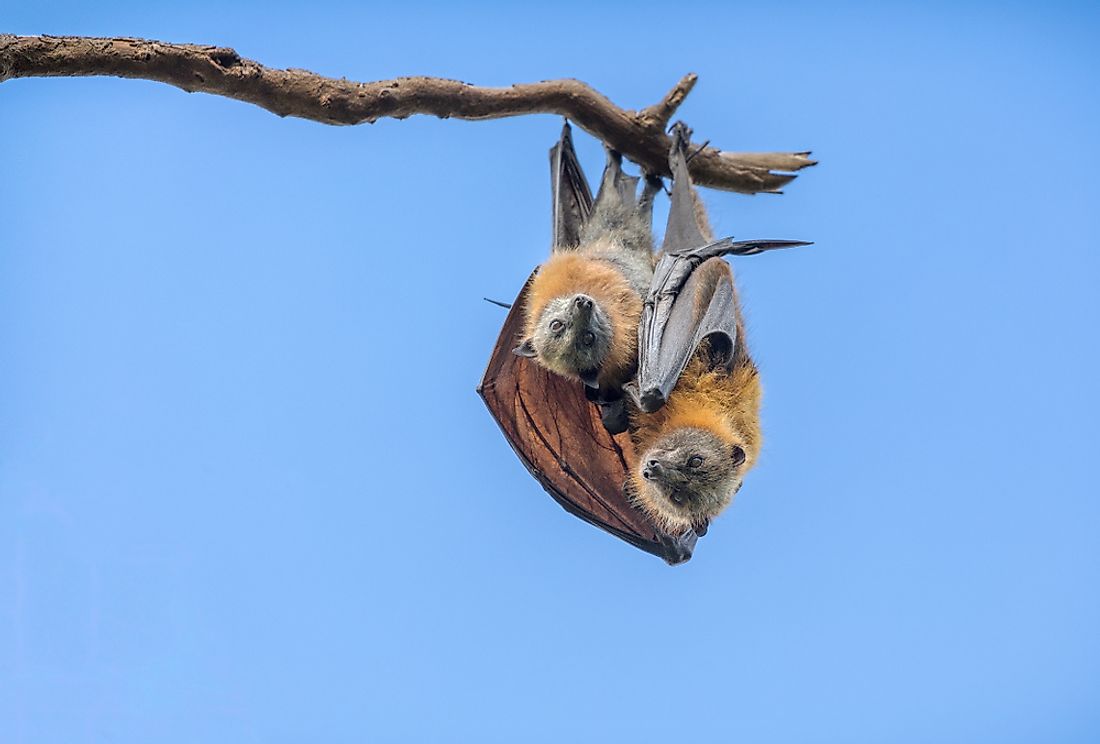Are Bats Mammals?

Bats belong to the order Chiroptera, the second largest mammalian order, and account for approximately 20% of all classified mammals. There are approximately 1,200 species of bats, broadly divided into two major suborders; Microchiroptera which comprises small bats and the Megachiroptera or the fruit-eating bats. Bats range in size; the flying foxes are the largest bats and can weigh up to 4 pounds and have a wingspan of over 5 feet while the Kitti's hog-nosed bat is the smallest species weighing 2 grams with a wingspan of only 6.7 inches. Most of the bats are insectivores and frugivores. Some also feed on animals like the vampire bats which feed on blood. Almost all bats are nocturnal.
Why Are Bats Considered Mammals?
From a distance, one can easily confuse a bat for a bird hanging upside down. However, unlike birds, bats are exclusively mammals. They exhibit almost all the defining characteristics of mammals. Bats are the only mammals with true flight. Some of the characteristics that make bats mammals include:
Presence of Mammary Glands
One of the most distinguishing features of mammals is the presence of mammary gland which is only found in class Mammalia. The mammary gland is an exocrine gland that produces the necessary milk for the offspring. Female bats have mammary glands that produce milk during lactation. However, unlike humans, the mammary glands in bats are not fixed in a particular place. The glands are located on the flank, along the thoracic walls. Interestingly, both the male and the female Dayak fruit bat have mammary glands with the male producing smaller amount of milk compared to the female.
Bats Give Birth to Live Offspring
Bats, like almost all mammals, give birth to live offspring. Fertilization and implantation occur inside the female. However, the female has the ability to delay the development of fetus until favorable conditions prevail. Bats give birth to a single pup per litter which is approximately 40% of the mother’s weight. After birth, the female raises its young one in a maternity colony together with other bats. The young bat mainly feeds on milk from the mammary gland until it is able to fly. Weaning takes place after approximately 8 days.
Hair in Some Parts of the Body
The body of a bat is covered by a skin which has one layer of epidermis and dermis. The skin has hair follicles which serves the same function as in most mammals. The wing membrane has no hair except between the fingers. The hair on the sensitive parts of the bat allows it to detect and adapt to the changing airflow. The hair is also used to retain and disperse secretion and also perform complex movements when capturing a prey in flight.
Interesting Facts About Bats
Bats are known to hang upside down while resting, with their feet adapted to relaxing in a clenched position. However, at least six species of bats do not assume the upside-down posture. Rather they have suctioning pads on their limbs which enable them to stick on a surface. Contrary to popular beliefs, bats are not really blind. Some of the bigger bats see better than human. However, most bats rely on echolocation to locate food.











